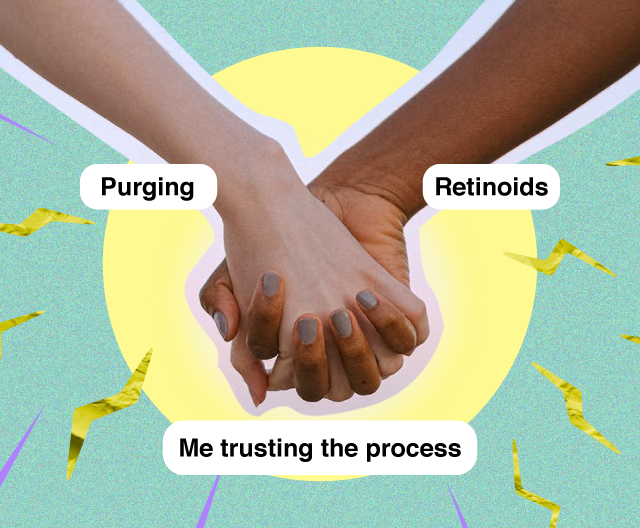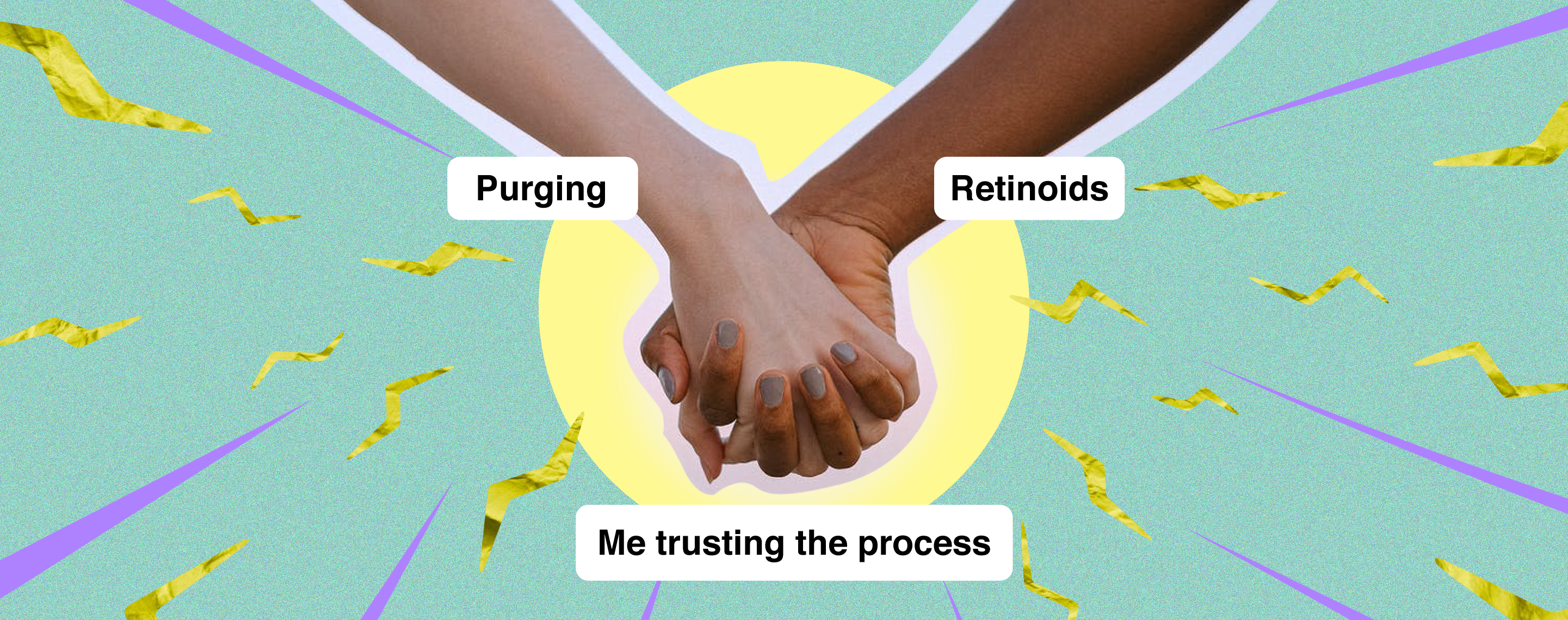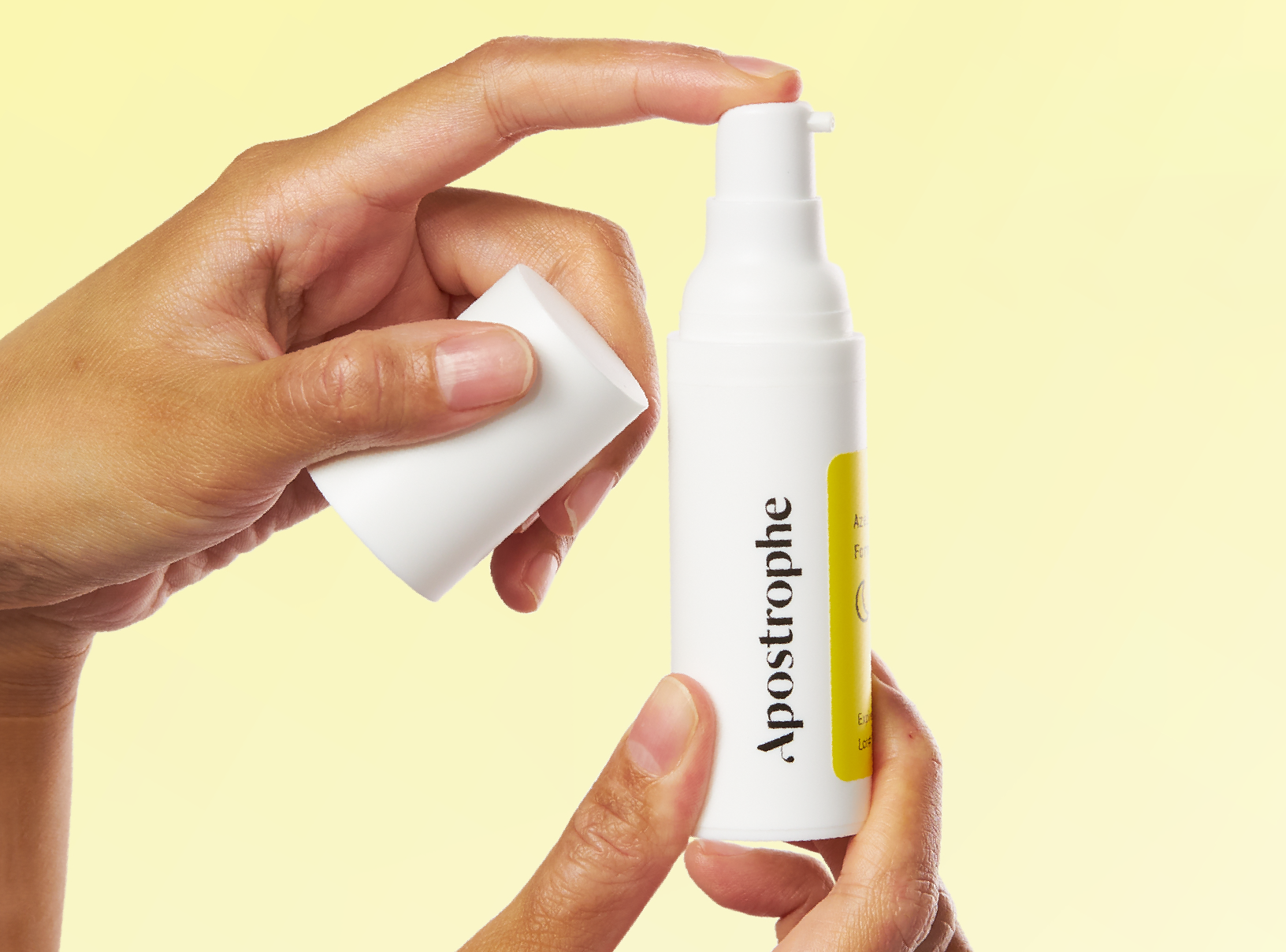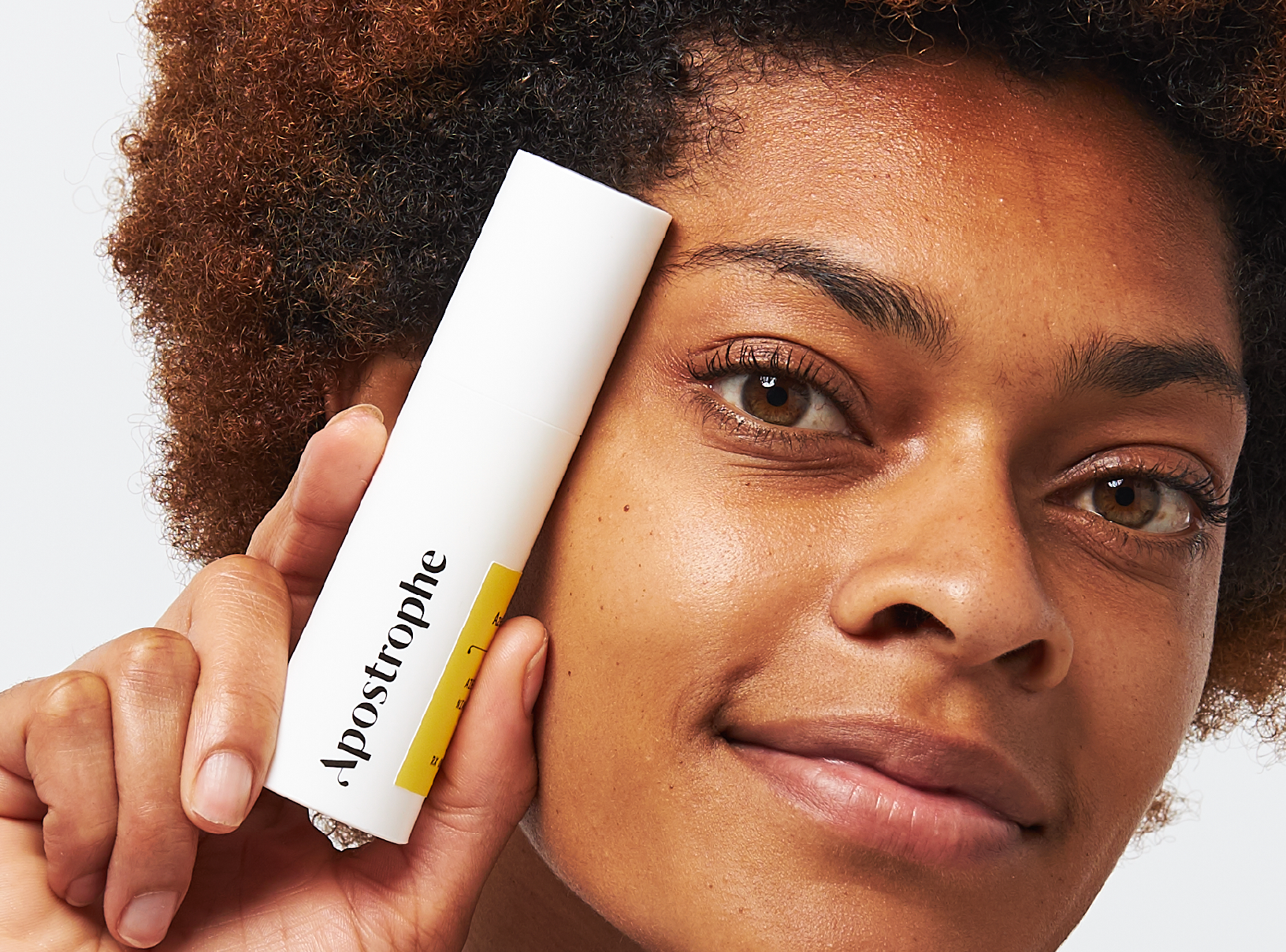Education
Tretinoin Skin Peeling is Real


SHARE
Education
Tretinoin Skin Peeling is Real
Medically reviewed by Aimee Paik, MD
Written by Apostrophe Team
Last updated 4/5/2024
Unfortunately, tretinoin skin peeling isn't one of those internet rumors you hear about all the time. It's real, but it also happens for good reason.
During the first few weeks of tretinoin application, it’s normal and extremely common for your skin to take on a slightly dry, flaky texture and for small amounts of skin to peel off from your face.
Tretinoin skin peeling occurs for a variety of reasons.
First, tretinoin is an exfoliator. When you apply tretinoin gel or cream to your face, your body speeds up the rate at which it replaces old skin with new skin, shedding the old layer of skin in the process.
Second, tretinoin can increase your skin’s sensitivity to sunlight, making it more likely that your facial skin could become sunburned and peel off naturally after sun exposure. So, wear sunscreen when you are using tretinoin.
Below, we’ve covered the key facts about skin peeling to help you more effectively deal with one of the more troublesome tretinoin side effects of topical tretinoin for acne or anti-aging.
Tretinoin Skin Peeling: The Basics
Tretinoin side effects are varied, but skin peeling is one that many tretinoin users have had to deal with. It usually happens in the first two to six weeks of using tretinoin—a period that many users refer to as a “purge” or adjustment period.
Skin peeling occurs because tretinoin speeds up the speed at which your body sheds old skin cells, via a process called “cell turnover.”
As new skin cells replace old ones, your body sheds the old skin. This can give your facial skin a flaky, dry and crusty appearance for the first few weeks or months of use.
Some people experience severe peeling when they begin using tretinoin, with large flakes of dead skin that can be peeled off the face. If it sounds a little grim, it's because it kind of is.
But it's important to keep in mind that skin peeling is a normal effect of tretinoin treatment and not something to be overly alarmed about.
Normally, skin peeling stops after two to six weeks of treatment as your body replaces the old skin with new, fresh skin cells, and as your skin becomes acclimated to the treatment.
How to Deal With Tretinoin Skin Peeling
Dealing with tretinoin skin peeling can be tough. After all, few things are worse than using tretinoin cream or gel to improve your skin quality, only to deal with what can be several months of dry, uncomfortable peeling skin.
Luckily, there are several ways to deal with tretinoin skin peeling:
Wait it out. If you’re patient, you can simply wait for the dry skin to completely peel away. Tretinoin skin peeling is usually temporary and only lasts for a few months for most people, meaning patience is normally an effective approach.
Use a moisturizer. It's totally okay to use a moisturizer with tretinoin. Apply the moisturizer first before tretinoin if you have skin dryness.
Avoid sunlight. Tretinoin skin peeling can get worse if you spend a lot of time in the sun, as your facial skin will be more sensitive to sunlight and likely to burn when you start using tretinoin.
Don’t scratch or rub your skin. Scratching, rubbing and touching your skin can all worsen dryness and flaking caused by tretinoin. Unless you’re cleaning your face or applying a skincare product, it’s best to avoid touching or scratching your face.
Switch to a lower strength of tretinoin cream. Topical tretinoin comes in several concentrations, ranging from .01% to .1%. If you’re prescribed a gel or cream with a high concentration of tretinoin and have excessive skin irritation and peeling, speak to your doctor about switching to a less concentrated tretinoin cream.
Reduce the amount of tretinoin you use. Most doctors recommend applying a pea-sized amount of tretinoin cream or gel to your face. Tretinoin is very effective, meaning there’s no need to overdo it and use more cream than you need.
Stop using tretinoin for one to two days. If you have severe peeling due to tretinoin, it’s often best to take a break using the cream or gel for one to two days and give your skin a chance to redevelop and recover.
Talk to your doctor about alternatives. Tretinoin skin peeling almost always ends on its own. However, if you have persistent and severe skin peeling from tretinoin, it’s best to talk to your doctor about alternative treatment options.
Learn More About How Tretinoin Works
Whether you use tretinoin for acne prevention or anti-aging, it’s important to know how tretinoin works if you plan on using it for the long term.
Our Tretinoin 101 guide covers everything there is to know about the medication, from its origins to studies showing its effectiveness, to how to to apply it effectively while doing as little damage to your skin as possible.
And remember: It's important to think of tretinoin as a long term anti-aging or acne treatment.
This stuff really does work, and we think it's one of the best acne and anti-aging creams you can use.
However, it's also not a bandaid on a bullet hole, or a quick fix for everyday types of acne. Good results take time, and you get good results. Just be patient.
This article is for informational purposes only and does not constitute medical advice. The information contained herein is not a substitute for and should never be relied upon for professional medical advice. Always talk to your doctor about the risks and benefits of any treatment.
Shop this post

Topical Retinoids
Like what you just read? Sign up for our email list to get the scoop on skincare science delivered straight to your inbox.

Education
What is milia?
What is milia? Today, we’re jumping into one type of bump that you may have heard about most commonly in infants — milia.
Read More
Education
Best moisturizer for acne-prone skin
If you have combination acne-prone skin, figuring out which moisturizer is best for your skin might be tough. In this guide, we break down the best moisturizer for combination, acne-prone skin.
Read More
Education
How to build a face care routine
As you get into skincare, it might seem overwhelming, especially trying to figure out the order you're supposed to apply products in. Below, we detail how to build a face care routine for your skin!
Read More
